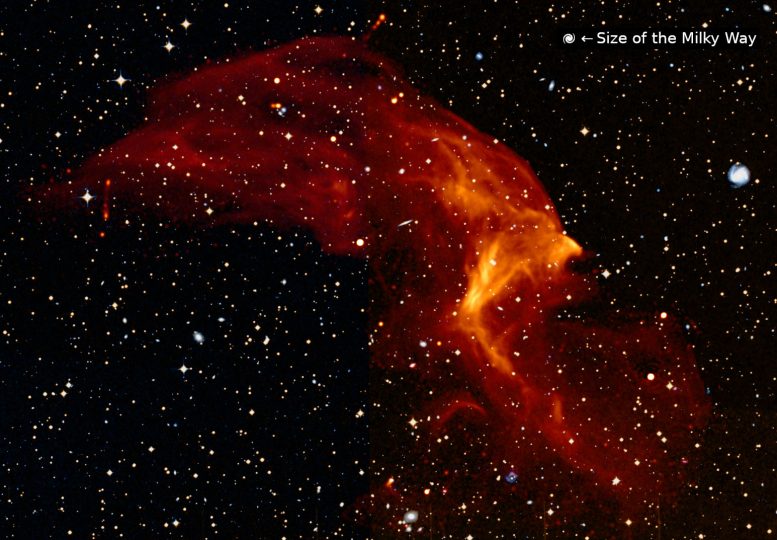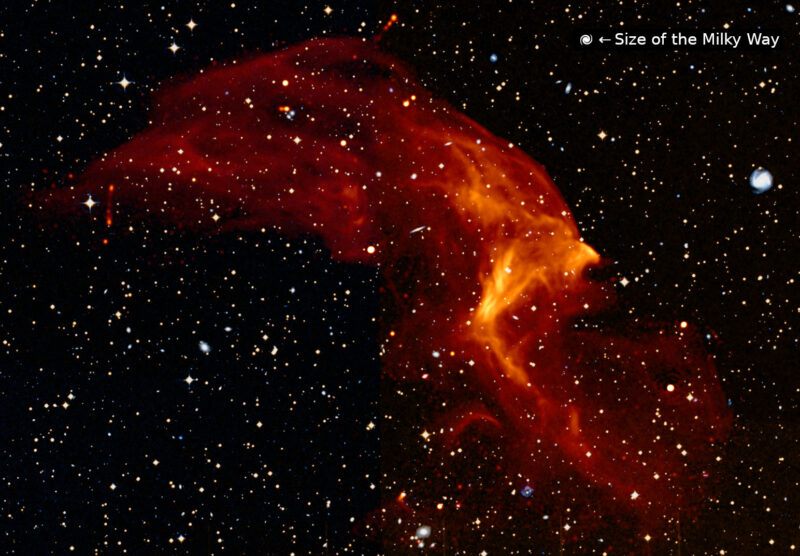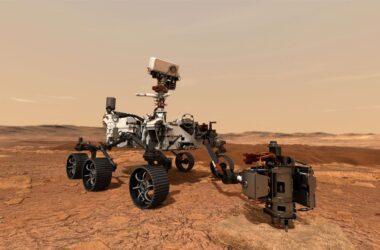
Image du front de l’onde de choc le plus grand, et une image de la Voie lactée pour l’échelle. Crédit : Francesco de Gasperin, SARAO
Les astronomes ont un faible pour les grandes explosions et collisionset il semble qu’ils essaient toujours de se surpasser pour en trouver une plus grande et plus brillante. Il y a un nouveau venu dans cette catégorie – un événement si important qu’il a créé une explosion de particules il y a plus d’un milliard d’années, encore visible aujourd’hui et 60 fois plus grande que l’ensemble de la Milky Way.
That shockwave was created by the merger of two galaxy clusters to create a supercluster known as Abell 3667. This was one of the most energetic events in the universe since the Big Bang, according to calculations by Professor Francesco de Gasperin and his time from the University of Hamburg and INAF. When it happened over 200 million years ago, it shot out a wave of electrons, similar to how a particle accelerator would. All these years later, those particles are still traveling at Mach 2.5 (1500 km / s), and when they pass through magnetic fields, they emit radio waves.

Picture of galaxy cluster Abell 3667, where the white color in the center is a concatenation of 550 distinct galaxies, but the red structures represent the shockwaves formed during the creation of this supercluster. Credit: Francesco de Gasperin, SARAO
Those radio waves are what Dr. de Gasperin and his colleagues observed using a new telescope array in South Africa known as MeerKAT. Radio signals alone weren’t enough to characterize the shockwave itself, though – the XMM-Newton X-ray observatory also spent some time focused on Abell 3667.
The results of all those observations is a better understanding of the physics of the merger of these galaxy clusters, which were “much more complex than we initially thought,” said Dr. de Gasperin. The shockwaves themselves look like “filaments that trace the location of giant magnetic field lines.” What is clear from the pictures is that, even when scientists are simply looking for big collisions, the resulting radio images might be awe-inspiring in themselves.
Originally published on Universe Today.
For more on this discovery, see A Massive Cosmic Shock Wave That Extends for 6.5 Million Light Years.



